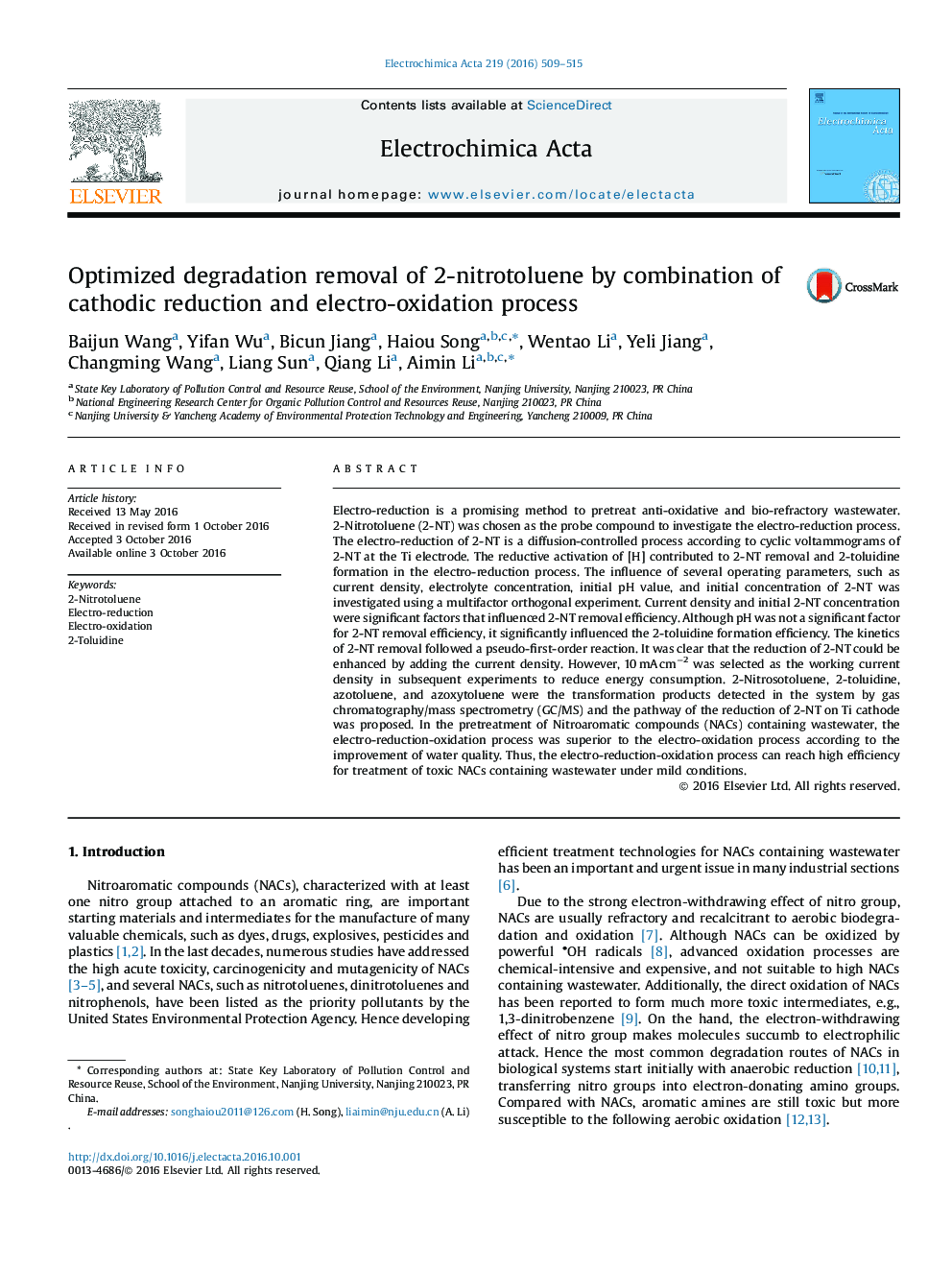| Article ID | Journal | Published Year | Pages | File Type |
|---|---|---|---|---|
| 6472981 | Electrochimica Acta | 2016 | 7 Pages |
â¢Investigating the influence of the operating parameters by a multifactor orthogonal experiment.â¢The reduction peak (approximately â0.75 V) of 2-nitrotoluene was confirmed.â¢The intermediates of 2-nitrotoluene reduction on Ti electrode were confirmed by GC/MS.â¢Application of electro-reduction-oxidation in the pretreatment of nitrification wastewater.
Electro-reduction is a promising method to pretreat anti-oxidative and bio-refractory wastewater. 2-Nitrotoluene (2-NT) was chosen as the probe compound to investigate the electro-reduction process. The electro-reduction of 2-NT is a diffusion-controlled process according to cyclic voltammograms of 2-NT at the Ti electrode. The reductive activation of [H] contributed to 2-NT removal and 2-toluidine formation in the electro-reduction process. The influence of several operating parameters, such as current density, electrolyte concentration, initial pH value, and initial concentration of 2-NT was investigated using a multifactor orthogonal experiment. Current density and initial 2-NT concentration were significant factors that influenced 2-NT removal efficiency. Although pH was not a significant factor for 2-NT removal efficiency, it significantly influenced the 2-toluidine formation efficiency. The kinetics of 2-NT removal followed a pseudo-first-order reaction. It was clear that the reduction of 2-NT could be enhanced by adding the current density. However, 10Â mAÂ cmâ2 was selected as the working current density in subsequent experiments to reduce energy consumption. 2-Nitrosotoluene, 2-toluidine, azotoluene, and azoxytoluene were the transformation products detected in the system by gas chromatography/mass spectrometry (GC/MS) and the pathway of the reduction of 2-NT on Ti cathode was proposed. In the pretreatment of Nitroaromatic compounds (NACs) containing wastewater, the electro-reduction-oxidation process was superior to the electro-oxidation process according to the improvement of water quality. Thus, the electro-reduction-oxidation process can reach high efficiency for treatment of toxic NACs containing wastewater under mild conditions.
Graphical abstractDownload high-res image (75KB)Download full-size image
